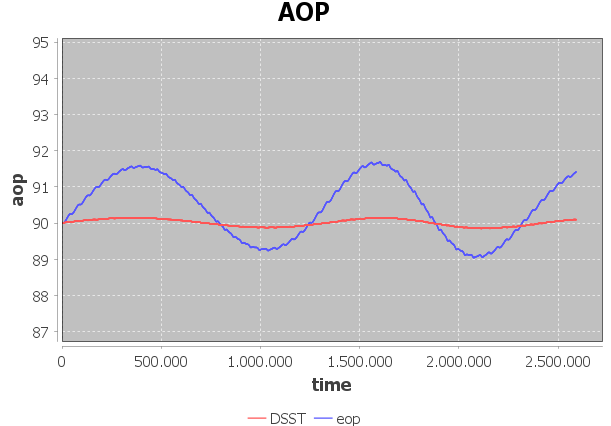Hello everyone,
I am working on some Elliptical Lunar Frozen Orbits for my Master’s thesis. I would like to ask if you have any suggestions on how to compute the mean elements of a lunar orbit considering the third-body effect of the Earth, or if you could recommend any papers related to this topic.
I am currently using DSSTPropagator. However, the initial state of the mean elements coincides with the initial state of the osculating elements obtained with NumericalPropagator.

Orbit keplerianOrbit = new KeplerianOrbit(6142.491723922354e3, 0.6279986005774667, Math.toRadians(56.361858), Math.toRadians(88.32361852647183), Math.toRadians(309.63628514064675), Math.toRadians(258.4590732752806),
PositionAngleType.TRUE, ReferenceFrame, initialDate, moon_MU);
SpacecraftState initialState = new SpacecraftState(keplerianOrbit);
final double minStepDSST = initialState.getKeplerianPeriod();
final double maxStepDSST = 10000;
final double[][] tol = DSSTPropagator.tolerances(10, initialState.getOrbit());
final DormandPrince54Integrator integratorDSST = new DormandPrince54Integrator(minStepDSST, maxStepDSST, tol[0], tol[1]);
final DSSTPropagator dsstProp = new DSSTPropagator(integratorDSST, PropagationType.MEAN);
DSSTForceModel earth= new DSSTThirdBody(CelestialBodyFactory.getEarth(), earth_MU);
dsstProp.addForceModel(earth);
dsstProp.setInitialState(initialState, PropagationType.OSCULATING);
for (int i=0; i<proptime; i+=500)
{
double time=i;
SpacecraftState finalStateDSST= dsstProp.propagate(initialDate.shiftedBy(time));
}
Thank you in advance,
Luna